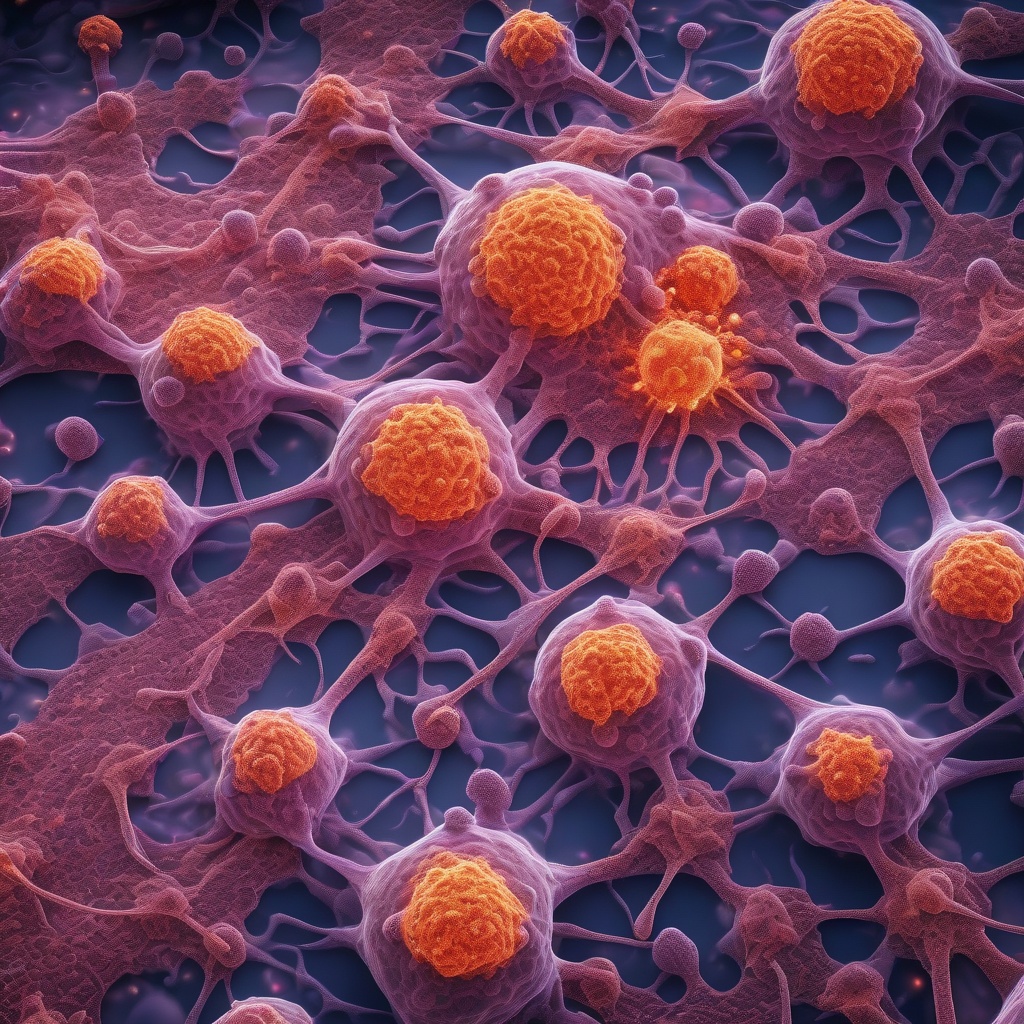Unraveling Gastric Cancer: Tumor Immune Microenvironment Analysis and Key Pathway Discoveries Revealed
Gastric cancer, also known as stomach cancer, is a leading cause of cancer-related deaths worldwide. Despite advances in diagnosis and treatment, the prognosis for gastric cancer patients remains poor. Recent studies have highlighted the importance of the tumor immune microenvironment (TIME) in cancer progression and treatment outcomes. In this blog post, we will discuss a recent study that analyzed the TIME in gastric cancer and identified key pathways and cell types that may play a crucial role in tumor progression.
The Tumor Immune Microenvironment in Gastric Cancer
The tumor immune microenvironment (TIME) is composed of various immune cells, including tumor-associated macrophages (TAMs), T cells, B cells, and mast cells, among others. These immune cells interact with cancer cells and influence tumor growth, invasion, and metastasis. In gastric cancer, the TIME has been shown to be characterized by immune suppression, which enables cancer cells to evade immune surveillance and promote tumor growth.
Tumor-Associated Macrophages and Mast Cells: Key Players in Gastric Cancer
Tumor-associated macrophages (TAMs) and mast cells are two key immune cell types that have been implicated in gastric cancer progression. TAMs are known to promote tumor growth, angiogenesis, and immune suppression, while mast cells have been shown to contribute to tumor growth, invasion, and metastasis. Recent studies have highlighted the importance of TAMs and mast cells in gastric cancer, with high levels of these cells associated with poor prognosis.
Gene Enrichment Analyses: Identifying Key Pathways
A recent study published in Nature analyzed the TIME in gastric cancer using single-cell RNA sequencing and gene enrichment analyses. The study identified high expression in several pathways, including P53, Wnt, and JAK-STAT3, in TAMs and mast cells. These pathways are known to play critical roles in cancer cell proliferation, survival, and immune evasion. The study also found that cell communication was more active in TAMs and mast cells, suggesting that these cells may play a key role in modulating the TIME.
Key Findings: P53, Wnt, and JAK-STAT3 Pathways
The P53 pathway is a critical tumor suppressor pathway that regulates cell growth and apoptosis. In gastric cancer, P53 mutations are common, leading to loss of function and promoting tumor growth. The Wnt pathway is also involved in cell proliferation and differentiation, and aberrant activation of this pathway has been implicated in gastric cancer. The JAK-STAT3 pathway is a key signaling pathway that regulates immune responses and inflammation. In gastric cancer, this pathway has been shown to promote immune suppression and tumor growth.
Implications for Gastric Cancer Treatment
The findings of this study have important implications for gastric cancer treatment. Targeting the P53, Wnt, and JAK-STAT3 pathways in TAMs and mast cells may provide new therapeutic strategies for gastric cancer. Additionally, the study highlights the importance of considering the TIME in gastric cancer treatment, with therapies aimed at modulating the immune microenvironment potentially improving treatment outcomes.
Conclusion
In conclusion, the study analyzed the tumor immune microenvironment in gastric cancer and identified key pathways and cell types that may play a crucial role in tumor progression. The findings highlight the importance of TAMs and mast cells in gastric cancer, and the P53, Wnt, and JAK-STAT3 pathways as potential therapeutic targets. Further research is needed to validate these findings and explore the clinical implications of targeting the TIME in gastric cancer. Read the full study here.



